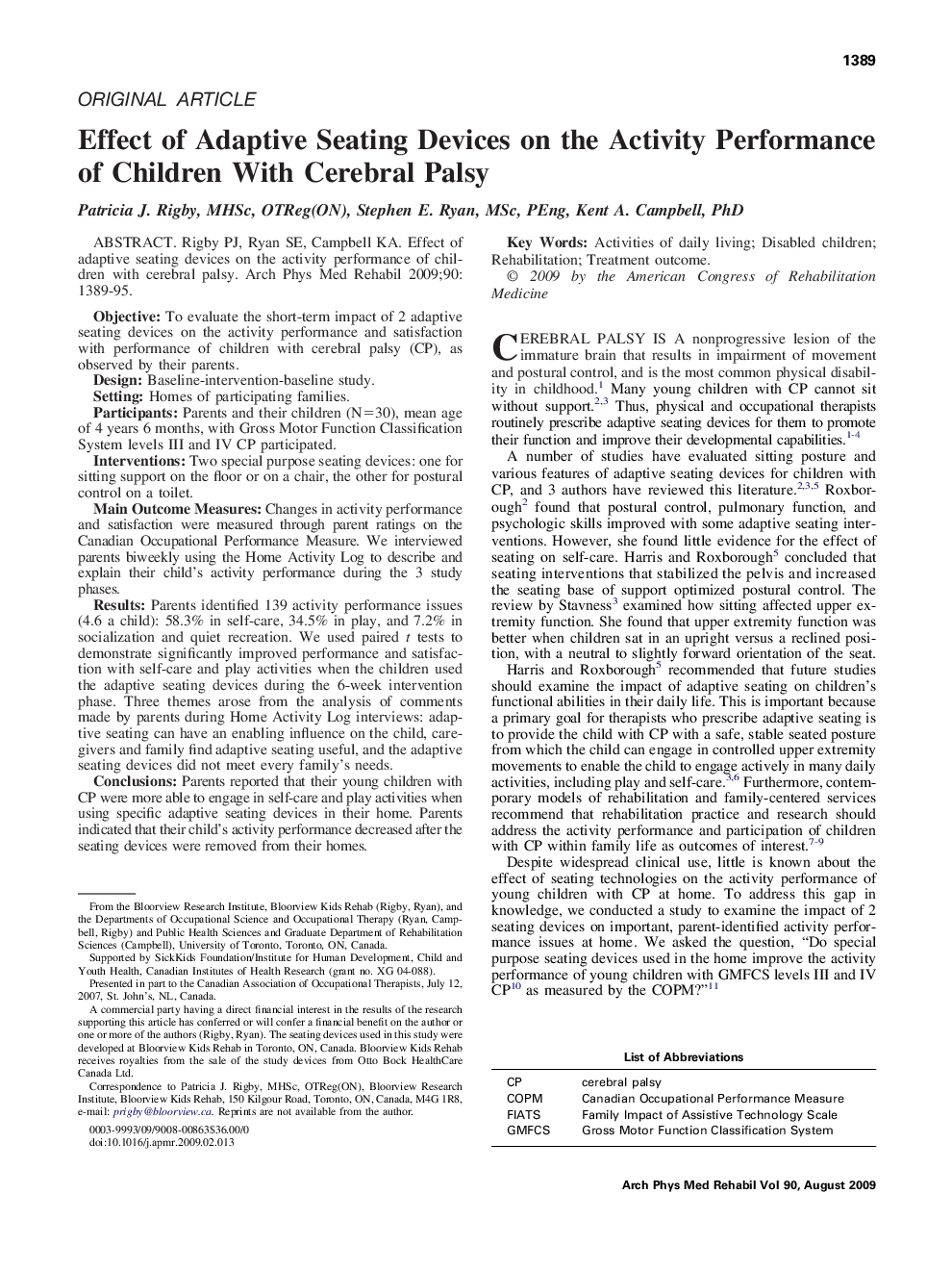| کد مقاله | کد نشریه | سال انتشار | مقاله انگلیسی | نسخه تمام متن |
|---|---|---|---|---|
| 3452184 | 1595763 | 2009 | 7 صفحه PDF | دانلود رایگان |

Rigby PJ, Ryan SE, Campbell KA. Effect of adaptive seating devices on the activity performance of children with cerebral palsy.ObjectiveTo evaluate the short-term impact of 2 adaptive seating devices on the activity performance and satisfaction with performance of children with cerebral palsy (CP), as observed by their parents.DesignBaseline-intervention-baseline study.SettingHomes of participating families.ParticipantsParents and their children (N=30), mean age of 4 years 6 months, with Gross Motor Function Classification System levels III and IV CP participated.InterventionsTwo special purpose seating devices: one for sitting support on the floor or on a chair, the other for postural control on a toilet.Main Outcome MeasuresChanges in activity performance and satisfaction were measured through parent ratings on the Canadian Occupational Performance Measure. We interviewed parents biweekly using the Home Activity Log to describe and explain their child's activity performance during the 3 study phases.ResultsParents identified 139 activity performance issues (4.6 a child): 58.3% in self-care, 34.5% in play, and 7.2% in socialization and quiet recreation. We used paired t tests to demonstrate significantly improved performance and satisfaction with self-care and play activities when the children used the adaptive seating devices during the 6-week intervention phase. Three themes arose from the analysis of comments made by parents during Home Activity Log interviews: adaptive seating can have an enabling influence on the child, caregivers and family find adaptive seating useful, and the adaptive seating devices did not meet every family's needs.ConclusionsParents reported that their young children with CP were more able to engage in self-care and play activities when using specific adaptive seating devices in their home. Parents indicated that their child's activity performance decreased after the seating devices were removed from their homes.
Journal: Archives of Physical Medicine and Rehabilitation - Volume 90, Issue 8, August 2009, Pages 1389–1395